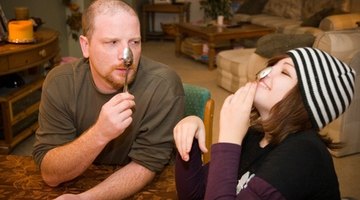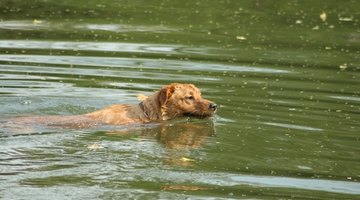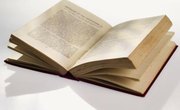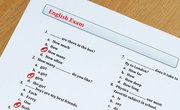The concept of a possessive noun is not as confusing as the spelling and punctuation added to a noun to make it possessive. Most kids understand that something in the sentence belongs to someone or something. However, when it is time to make the noun possessive, they wonder whether to add an "s" or an "es" and where to put the apostrophe. Teach students one simple rule that always works, and they will write possessive nouns like pros.
Review nouns with the kids. Remind them that a noun is a person, place, thing or idea. Brainstorm lists of nouns and write them down. For example, write the words "cat", "brother", "teacher", and "box".
Discuss singular and plural with the kids to refresh their memories. Explain that "singular" means "single" or "one" thing" and "plural" means "more than one thing." To practice, make the words on your list into plurals by adding an "s" or an "es": "cats", "brothers", "teachers", "boxes". Remind the kids that some nouns change when they become plural: "child" becomes "children", "mouse" becomes "mice".
Introduce the apostrophe. Show the kids what it looks like and explain the two ways it is used. First, apostrophes make contractions such as "isn't" and "that's". The apostrophe is placed where the letters have been removed. "Is" plus "not" drops the "o" and puts an apostrophe in its place to become "isn't". Second, add apostrophes to nouns to make them show possession. A mnemonic that may help is, "If an item belongs to a noun, an apostrophe belongs to the noun, too."
Explain that apostrophes in nouns tell readers who or what possesses something in the sentence. The second thing the apostrophe does is tell the reader how many of the nouns possess something. The placement of the apostrophe tells you whether the food belongs to one dog or many dogs, or whether you have one brother or more than one brother who owns a car.

Teach the possessive apostrophe rule: "If a noun is plural and ends in s, then add an apostrophe to the end; otherwise, add apostrophe then an s." This sounds a bit awkward at first, but it always works.
Try the rule out with students. Go back to your list and make all of the nouns into short sentences in which the noun possesses something, but do not add the apostrophe or s yet. For example, "The cat food is delicious," and "My brother music is too loud." Repeat with the plural nouns: "The cats food is delicious," and "My brothers music is too loud."

Apply the rule to each sentence. Have the kids repeat the rule out loud each time. For example: "The cat food is delicious." "Cat" is the noun, and "food" belongs to the cat. "If it's plural and ends in s, add an apostrophe to the end; otherwise, add apostrophe s." "Cat" is not plural, so we form the possessive by adding apostrophe s: "cat's". Repeat the practice with the plural nouns: "The cats food is delicious." "Cats" is the noun and "food" belongs to the cats. Say aloud, "If it's plural and ends in s, add an apostrophe to the end..." and the sentence becomes, "The cats' food is delicious."

Practice until the kids can repeat the rule aloud on their own. Because a lot of confusion comes from singular nouns that end in s, such as 'Gus" or "walrus", remind students that the rule always works. Repeat the rule, "If it's plural and ends in s, add an apostrophe to the end; otherwise, add apostrophe s." The noun "Gus" is not plural, so it follows the second part of the rule: "Gus's".
Review one last time by choosing one word, such as "uncle", and writing it four ways: singular, plural, singular possessive, plural possessive: "Her uncle is nice." "Her uncles are nice." "Her uncle's car is nice." "All of her uncles' cars are nice."
Tip
Another possessive formation that often stumps even adults is when a family name, such as Jones, ends in s and the writer wants to show that he is talking about all members of the family, so the family name itself becomes plural: "Joneses". To show that the Joneses own a nice home, write, "The Joneses' home is beautiful." The name "Joneses" follows the rule: "If it's plural and ends in s, add an apostrophe to the end."

Related Articles
References
Tips
- Another possessive formation that often stumps even adults is when a family name, such as Jones, ends in s and the writer wants to show that he is talking about all members of the family, so the family name itself becomes plural: "Joneses". To show that the Joneses own a nice home, write, "The Joneses' home is beautiful." The name "Joneses" follows the rule: "If it's plural and ends in s, add an apostrophe to the end."
Writer Bio
Deanne Lachner has been writing and editing fiction and nonfiction for more than 15 years. She has published articles in "Working Women," "Performance Magazine" and the "Direct Selling News." Lachner holds a master's degree in English from Texas Woman's University and is pursuing a second master's degree in instructional design and technology.










